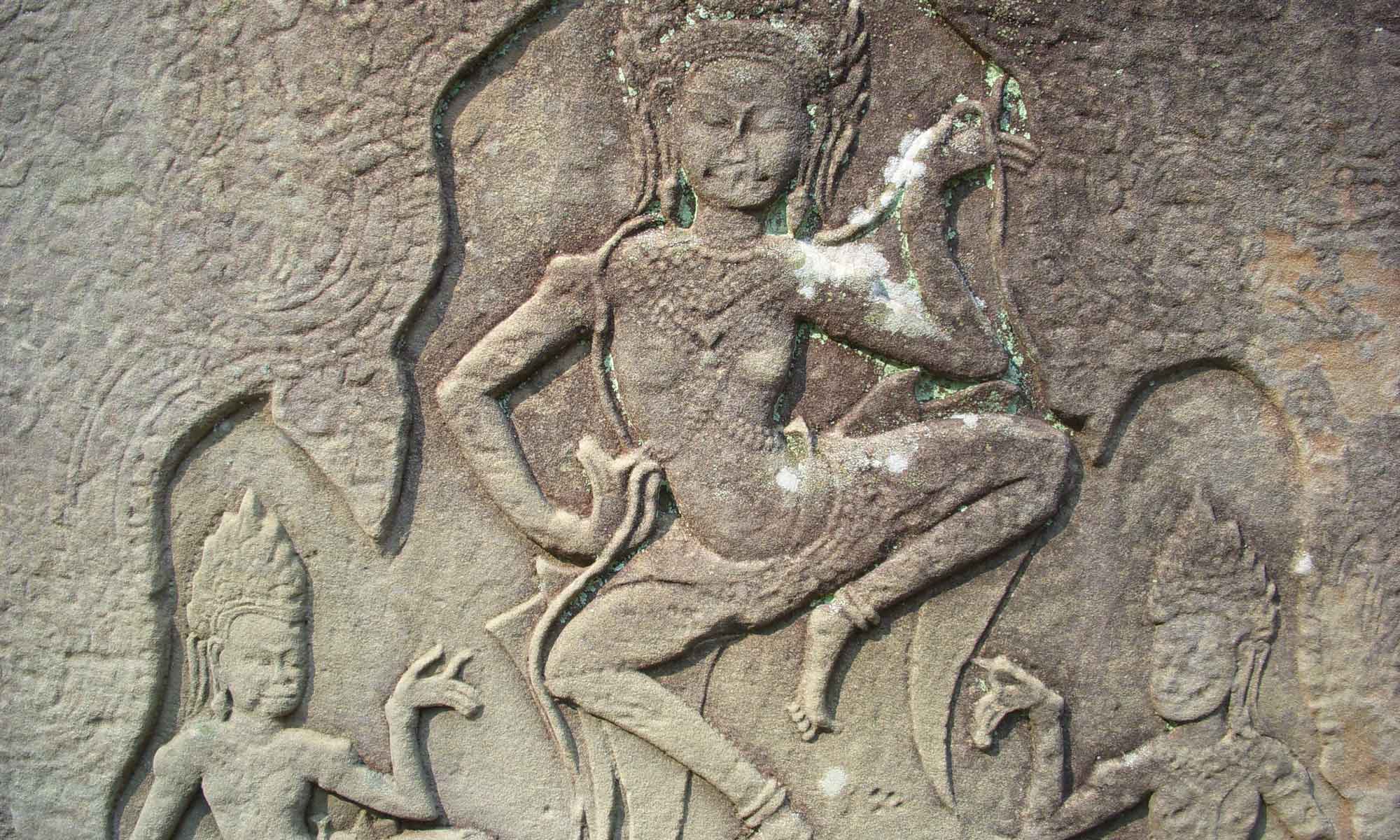A panel of three diverse artists was featured at the 2008 ASWM Symposium. Helen Klebesadel and Rae-Atira Soncea from WI and Sid Reger from PA presented work and discussed how goddess myth and women’s life cycles inform their art.
Crone, Mother, Maiden, a 40×30 watercolor by Helen Klebesadel. Smaller giclee prints of the painting, and Helen’s other work, can be found here:www.niceharpy.etsy.com
Helen Klebesadel “Wholeness in art and life.” Art is a place where I rethink everything. I use my art to understand the world and to recreate myself. When I first went to art school at 18, I was taught by and about men–taught by no women, and about no women, nor artists of color.
I dropped out, and a decade later I returned to college and studied art and women’s studies. This gave me the vocabulary I needed to articulate my experience. I committed myself to work for the opportunity for all people’s experiences to be represented in our visual culture. I gave myself permission to focus on the lives of women in my own work.
I believe that women need to take back our spirituality, our sexuality, and our intellect, and that we can have all three. As Wisconsin farm girl, I wasn’t “supposed” to be smart or an artist, and we didn’t ever talk about sexuality. Now I try to be whole in my life, and to present that wholeness in my work.
I paint quilts to celebrate the arts of my grandmothers. I use images from women’s traditional arts, like ribbons, combining them with figures of women emerging, breaking out of wrappings. I also use archetypes, like this Maiden, Mother, and Crone, to show the strength of women’s lives. Increasingly in my work I find myself focus in on environmental concerns, visually drawing parallels between the earth’s body and our own. Everything is connected.

Sid Reger: “What if?” I started painting as a child in my mother’s studio. Like her, I worked on conventional subjects—mostly landscapes. At the same time, I wanted to become an archaeologist when I grew up. (That response was a real conversation stopper for inquiring grown ups.) These two interests didn’t meet again until, as an adult, I began to study petroglyphs— beautiful and mysterious art made in a sacred context.
Next I read Gimbutas’ Language of the Goddess. That was my “Aha!” moment as an artist. I saw her wonderful gallery of Neolithic and Paleolithic designs, and asked the essential artist’s question: What if? “ What if we had “unearthed” sacred prayer cloths from the Ice Age? What if the most ancient artists had made thangka cloths and elaborate mandalas? What would their masks and ritual objects look like?”
This polymer clay mask is one of my answers to that question, part of a series—I wanted to combine the concept of a ritual mask with elements of art found in the caves of Europe.
Rae Atira-Soncea: Sadly and suddenly, Rae passed away March 1, 2009 at the age of 56. Examples of her some of her artworks, and comments by friends and family on her amazing life of vision and activism can be found here: Hedgecroft
We add to those of many others our prayers that her family and friends find comfort and healing. She was a visionary artist whose work will live on and continue to inspire others. We have named our annual panel “Mythic Inspirations” in her memory.



You must be logged in to post a comment.